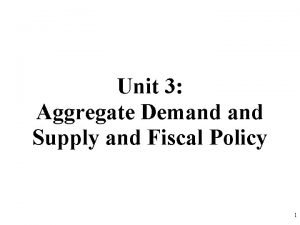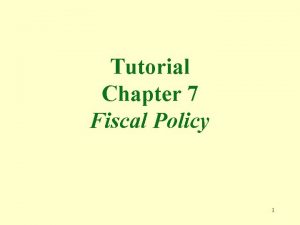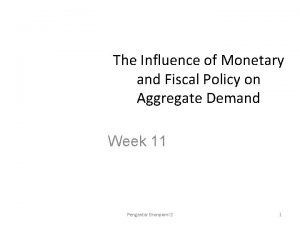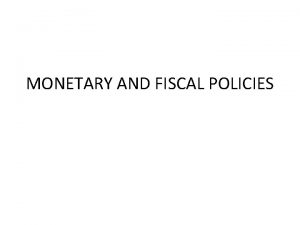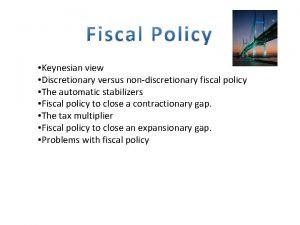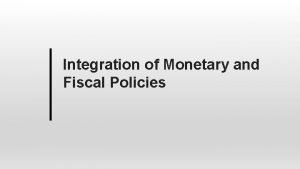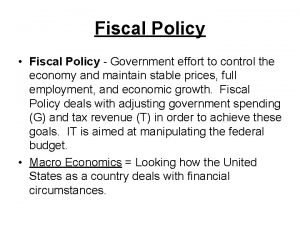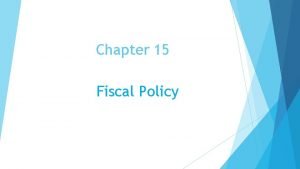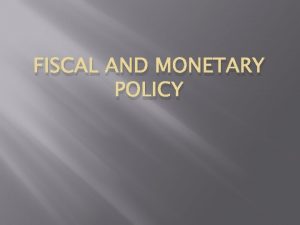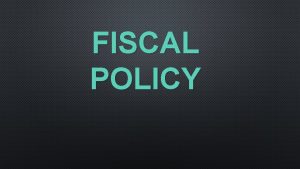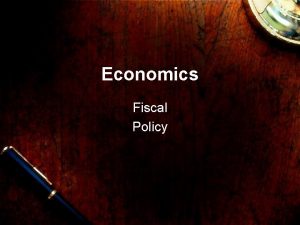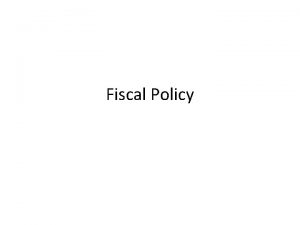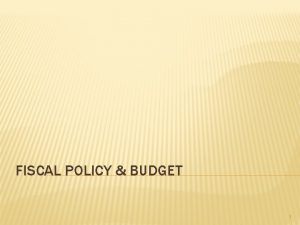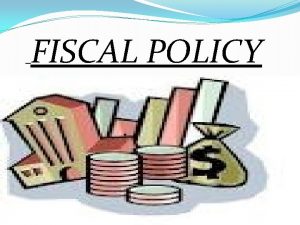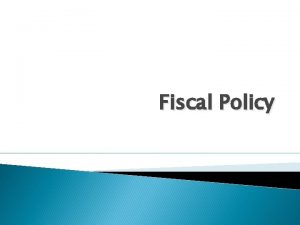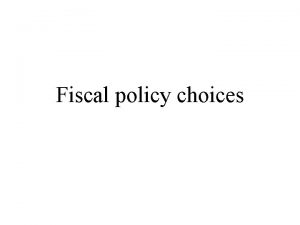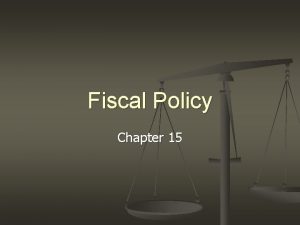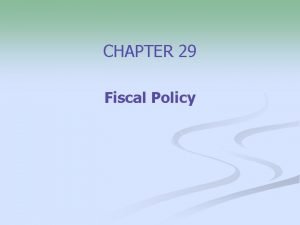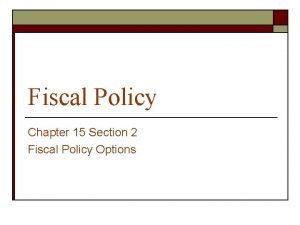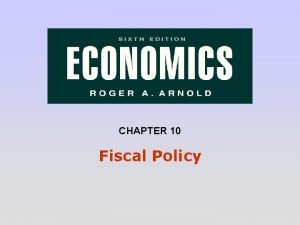FISCAL POLICY Chapter 15 What is Fiscal Policy
















- Slides: 16

FISCAL POLICY Chapter 15

What is Fiscal Policy? • The means by which a government adjusts its spending levels & tax rates to monitor & influence a nation’s economy • Used to achieve economic growth, full employment and price stability • A fiscal year is a 12 - month period • The government’s fiscal year is October 1 to September 30

How Fiscal Policy Works- Keynesian Economics • Governments can influence productivity levels by increasing or decreasing tax levels & public spending • This influence can: • Curb inflation (which normally should be 2 -3%) • Increase employment • Maintain a healthy value of money

Slowing the Economy. Contractionary Policies • Goal is to reduce growth • Necessary when inflation is too high • Government can: • Increase taxes to take money out of the economy • Decrease spending, thereby decreasing the money in circulation • Negative effects could be a sluggish economy & high unemployment

Expansionary Policies • Goal is to encourage economic growth • Higher government spending • Tax cuts to encourage consumer spending

An Example • Let's say that an economy has slowed down. Unemployment levels are up, consumer spending is down and businesses are not making profits. • The government decides to fuel the economy by decreasing taxes, which gives consumers more spending money. • At the same time, they increase government spending, such as building roads or schools. • By paying for such services, the government creates jobs and wages that are in turn pumped into the economy.

What will happen next? • Overall unemployment levels will fall. • With more money in the economy and fewer taxes to pay, consumer demand for goods and services increases.

Who Does Fiscal Policy Affect? • Effects are not the same for everyone. • Depending on the policymakers goals or party affiliation, tax cuts or increases may only affect certain groups, like the middle class • When spending is adjusted, sometimes only small groups are affected • Spending to build a bridge provides jobs to construction workers • Expanding the space program would impact the Houston area

The Bottom Line • The biggest obstacle is deciding how much government involvement there should be • It is essentially accepted that some degree of government involvement is necessary to sustain a healthy economy

BUDGETS & THE NATIONAL DEBT

The Federal Budget • The basic tool of fiscal policy is the federal budget • Two parts: revenue (taxes) & expenditures (spending) • When revenues exceed expenditures, there is a surplus • When expenditures exceed revenues, there is a deficit


Covering a Deficit • The government can create money or borrow • Creating money can cause hyperinflation- very high inflation • The government can borrow money though treasury bills, treasury bonds or notes • Excessive borrowing has created a national debt of over $17 trillion



 Cost-push inflation
Cost-push inflation Example fiscal policy
Example fiscal policy Fiscal policy practice
Fiscal policy practice Components of fiscal policy
Components of fiscal policy Crowding out effect of fiscal policy
Crowding out effect of fiscal policy Loanable funds graph recession
Loanable funds graph recession Instruments of fiscal policy
Instruments of fiscal policy Discretionary and non discretionary fiscal policy
Discretionary and non discretionary fiscal policy Instruments of fiscal policy
Instruments of fiscal policy Ib economics fiscal policy
Ib economics fiscal policy Fiscal demand side policy
Fiscal demand side policy Fiscal policy to control inflation
Fiscal policy to control inflation Types of fiscal policy
Types of fiscal policy Instruments of fiscal policy
Instruments of fiscal policy Crowding out effect of fiscal policy
Crowding out effect of fiscal policy Demand side fiscal policy definition
Demand side fiscal policy definition What is expansionary monetary policy
What is expansionary monetary policy

